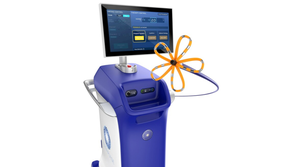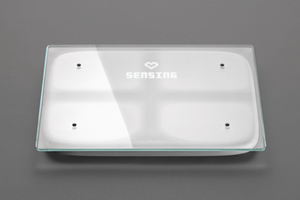Nanotechnology and many other burgeoning technologies have the potential to significantly improve healthcare. Along with companies, universities are leading the way in these innovative developments and instigating change in the industry. Faculty and researchers are collaborating at schools across the country to convert theories into actualities. Continuing advances in technology have yielded solutions for the medical industry that are smaller, faster, and more powerful than their predecessors. Others are breakthrough products that are the first of their kind. In the following feature, MPMN spotlights several of these notable emerging and nanotechnologies.
March 6, 2007
Originally Published MPMN March 2007
Emerging and Nanotechnologies
Nanotechnology and many other burgeoning technologies have the potential to significantly improve healthcare. Along with companies, universities are leading the way in these innovative developments and instigating change in the industry. Faculty and researchers are collaborating at schools across the country to convert theories into actualities. Continuing advances in technology have yielded solutions for the medical industry that are smaller, faster, and more powerful than their predecessors. Others are breakthrough products that are the first of their kind. In the following feature, MPMN spotlights several of these notable emerging and nanotechnologies.
Researchers Create Stretchy and Strong Polymeric Nanocomposite
Scientists have repeatedly encountered a stumbling block while trying to develop a material that is both stretchy and strong. For a polymeric composite to be stiff, it typically requires the inclusion of a hard filler material; however, the hard filler often inhibits polymer flexibility. As a result, most materials are either stretchy or strong—seldom both.
Penicillin-Coated Polymer Staves Off Staph Infections
Scientists at the University of Southern Mississippi (USM; Hattiesburg, MS; www.usm.edu) have modified expanded polytetrafluoroethylene (ePTFE) to facilitate adhesion of penicillin to its surface. The resulting penicillin-coated polymer could impede bacterial colonization of gram-positive Staphylococcus aureus
on implantable devices.
Wireless Technology Sparks New Approach to Powering Implantable Devices
Despite boasting a thriving multibillion-dollar market, implantable medical devices are not without their pitfalls. Patients aided by implants often face a number of dangerous power source–related problems, such as limited battery life, infections caused by percutaneous connections, and device discomfort. In an attempt to eliminate these drawbacks, Telemetry Research (Auckland, New Zealand; www.telemetryresearch.com) has developed a technology for powering implantable devices using inductively coupled power transfer.
Nano-Sized Coaxial Cable Transmits Visible Light
Coaxial cables have been at the forefront of telecommunications applications for decades. Thanks to a team of researchers from Boston College (Chestnut Hill, MA; www.bc.edu), nano-sized versions of these common cables could soon be making electromagnetic waves in the medical device industry as well.
Also Making News
Based on its proprietary Occlusion Spectroscopy technology, OrSense Ltd. (Nes Ziona, Israel; www.orsense.com) has introduced a noninvasive blood glucose–monitoring system. Enabling the continuous noninvasive measurement of blood glucose, hemoglobin, hematocrit, oximetry, and pulse rates with high sensitivity, the NBM-200 is slated for regulatory approval submission this year and for commercial availability in 2008, according to the firm. It received the Frost & Sullivan 2006 Technology Innovation Award for the monitoring system.
Copyright ©2007 Medical Product Manufacturing News
You May Also Like


